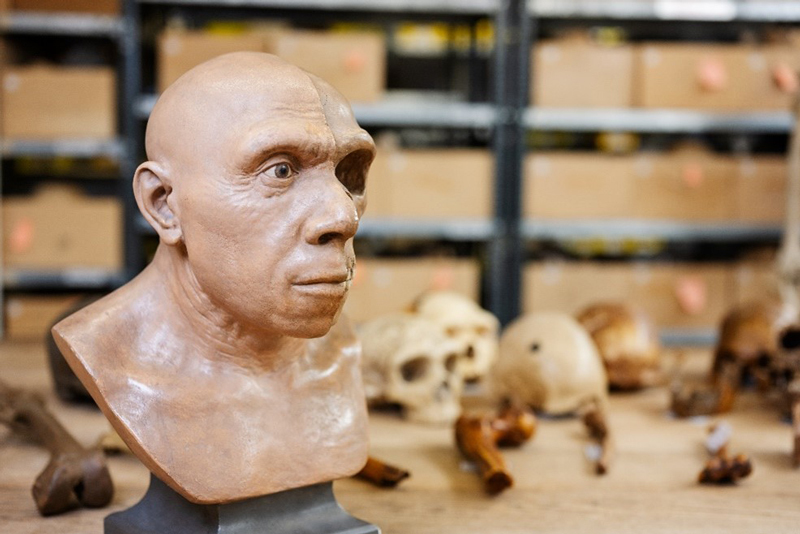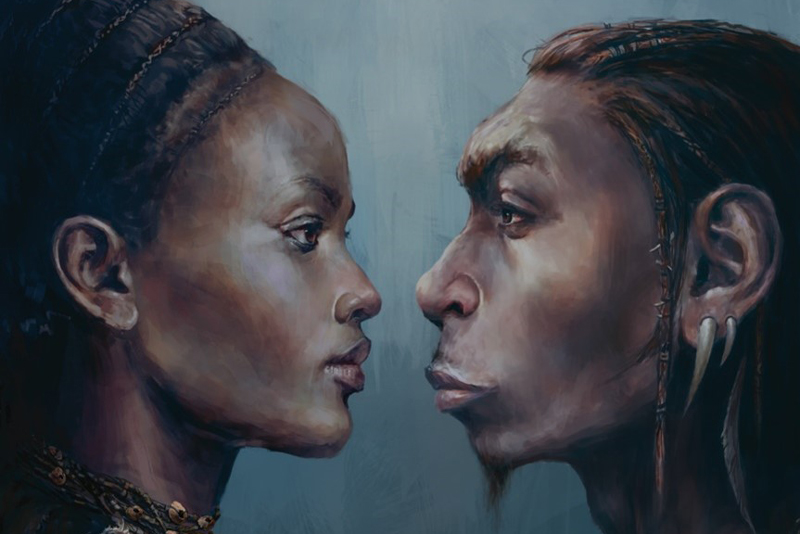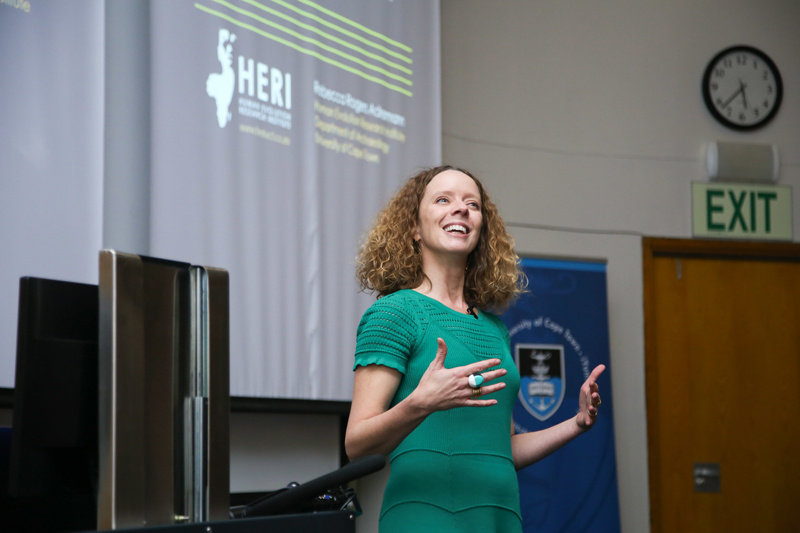Humans are the result of ‘braided’ genetic streams, not a ‘tree’ of evolution
07 October 2022 | Story Helen Swingler. Read time 8 min.
A new paper published in the top journal Nature Ecology & Evolution explores how we evolved through a complex process of hybridisation between Neanderthals and ancient humans at multiple points in ancient history. It debunks the popularised idea of a ‘tree’ of human evolution, said co-author Professor Becky Ackermann of the University of Cape Town (UCT).
Instead, fossil skeleton studies and ancient DNA evidence reveal an intricate process resembling a network, or braided stream, of genetic admixture between different groups coming together.
The new research is the result of a collaboration between Professor Ackermann, a biological anthropologist in UCT’s Human Evolution Research Institute (HERI) and the Department of Archaeology, and Professor Katerina Harvati, based at the Senckenberg Centre for Human Evolution and Palaeoenvironment at the University of Tübingen, Germany.
Titled “Merging morphological and genetic evidence to assess hybridization in Western Eurasian Late Pleistocene hominins”, the paper presents the first study of its kind. This explored multiple lines of evidence for identifying hybridisation in the fossil record, stored mostly in museums around the world.
“Clearly the origin of humankind is more complex than previously thought.”
“Clearly the origin of humankind is more complex than previously thought,” said Ackermann.
Rapid evolution
Many people living today have a small component of Neanderthal DNA in their genes, suggesting an important role for genetic exchange with archaic human lineages in the evolution of the human species.
Hybridisation is common throughout nature.
"It is estimated that about 10% of animal species produce hybrids, including, for example, bovids, bears, cats and canids,” Ackermann said. “Hybrids are also known in primates, our close relatives, such as baboons.
“Because hybridisation introduces new variation, and creates new combinations of variation, the process can facilitate particularly rapid evolution, especially when facing new or changing environmental conditions.”
Hybridisation may have provided ancient humans with genetic and anatomical features that gave them important advantages when migrating from Africa and spreading across the world, which resulted in our species becoming even more physically diverse and evolutionarily resilient, said the authors.

Pooling expertise
The study pulls together different lines of evidence. The collaboration arose out of Ackermann’s 2018 visit to the University of Tübingen as a research fellow, where she and Professor Harvati discussed how they could harness their different strengths to explore the question of hybridisation.
Harvati’s expertise lies in the Upper Palaeolithic era in Europe and the fossil record of that period. Ackermann is an expert on evolutionary process and how it affects skeletons, including mammal models for hybridisation.
“If you take all these lines of evidence together, you can provide a richer understanding of the evolutionary dynamics.”
Ancient DNA is seldom well-preserved in fossil specimens of ancient humans, so a focus on the skeleton is key. In their study, they focused on skull data from the Upper Palaeolithic collected by Harvati and contextualised their results within Ackermann’s work on mammal hybrids, as well as other ancient genetic data, where available.
“If you take all these lines of evidence together, you can provide a richer understanding of the evolutionary dynamics of hybridisation – and maybe even identify individual hybrids in the fossil record,” said Ackermann.
Novel and diverse
Harvati and Ackermann investigated a large number of ancient human fossils of individuals living between 40 and 20 000 years ago, from the Upper Palaeolithic of Eurasia, to test whether this represented a sample with evidence for gene exchange. These were examined and compared with unadmixed samples of Neanderthals, as well as ancient and more recent humans from Africa.
The authors examined three regions of these fossil skulls for signs of hybridisation: the jaws, the braincase, and the face. They did 3-dimensional morphometric measurements of these regions, but also looked for tell-tale signs of hybridisation that we see in other mammals.

“Hybridisation can produce evolutionary innovation, including morphological features that are novel and diverse. These might include, for example, intermediate morphology compared to Neanderthals or modern humans, such as dental abnormalities or unusual sizes. These are features we see in hybrids of various mammals, including primates.”
Their study found signals of hybridisation in the braincases and jaws – but not in the faces.
There are many possible reasons for that, Ackermann added.
“It is possible that because the face is important for social dynamics and interaction, it doesn’t evolve in the same way – it might be more constrained.”
The authors also compared the percentage of Neanderthal ancestry with how Neanderthal individuals looked. It turned out there was no correlation.
“The part of the genome you inherit may or may not be linked to what your head looks like.”
This may seem counter-intuitive, said Ackermann, but it points to the possibility that
not all aspects of the genome are responsible for cranial morphology.
“The part of the genome you inherit may or may not be linked to what your head looks like – and what your face looks like. That’s interesting to explore and may allow us to understand the genetic underpinnings of cranio–facial morphology. That’s a big avenue for future research,” said Ackermann.
Tracking hybrids in space
Harvati and Ackermann also identified regions within Western Eurasia where hybridisation occurred, as well as identifying individuals as potential hybrids that had never been identified as such previously. This included individuals from the Middle East, Western and Eastern Europe. They do caution that this needs further confirmation.
“Where possible, individual hybrid status should be confirmed using genetic data, and as such we consider these identifications as hypotheses to be tested,” said Harvati.
This comprehensive study reinforces the braided stream narrative of human evolution, Ackermann added, and indicates that gene exchange was likely to be widespread.
“We hope this study encourages researchers to look more closely at these fossils, and the fossil record more generally, and combine multiple lines of evidence for identifying hybridisation in the past.”
 This work is licensed under a Creative Commons Attribution-NoDerivatives 4.0 International License.
This work is licensed under a Creative Commons Attribution-NoDerivatives 4.0 International License.
Please view the republishing articles page for more information.
Research & innovation





































